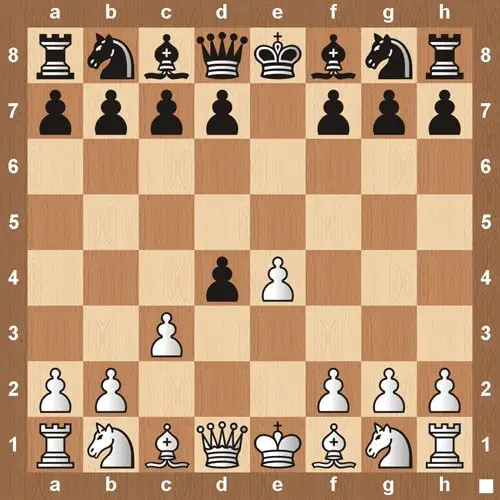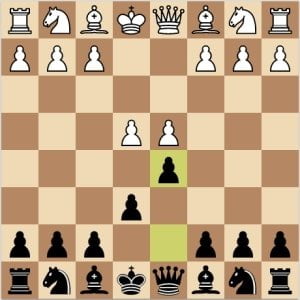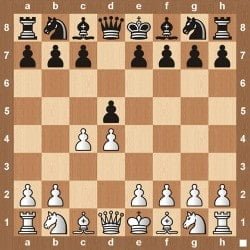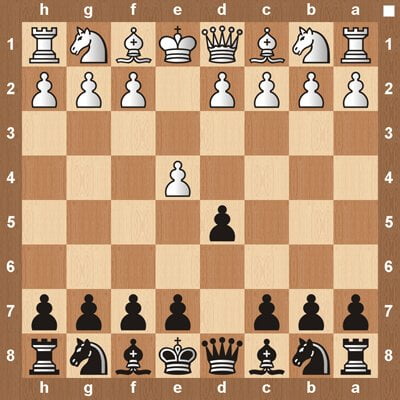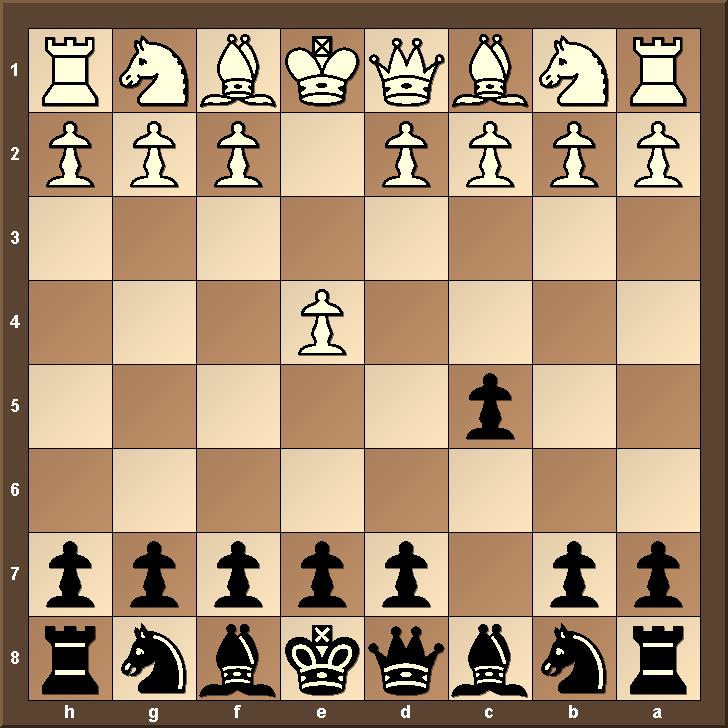Unleashing Fury: The Most Aggressive Chess Openings for White
In the riveting world of chess, where battles of wits and strategies unfold, an aggressive opening can dictate the tempo of the game, putting your opponent on the back foot from the very start. Ever wondered why grandmasters, from the legendary Bobby Fischer to the modern maestro Magnus Carlsen, have often favored assertive starts? It’s because an aggressive opening, especially when playing white, can set the tone, giving you a psychological edge.
With centuries of chess evolution, certain openings have stood the test of time, earning their esteemed place in the chess hall of fame. This guide unpacks the most aggressive chess openings for white, offering you a strategic arsenal that has been embraced by the world’s best. Dive in, and let’s decode the mastery behind these powerful starts.
The King’s Gambit
For centuries, the King’s Gambit has held a captivating allure for chess enthusiasts, representing audacity, ingenuity, and sheer aggression right from the game’s inception. This bold opening has been a double-edged sword, promising both victory and vulnerability. Let’s plunge into the enigmatic world of the King’s Gambit and uncover its mysteries.
Basic Moves of the King’s Gambit
Initiated by white, the King’s Gambit commences with:
- e4 e5
- f4
In this sequence, white boldly offers the f-pawn as a sacrifice, aiming to accelerate piece development and gain a stronghold in the center. To visualize:
| a | b | c | d | e | f | g | h | |
|---|---|---|---|---|---|---|---|---|
| 8 | r | n | b | q | k | b | n | r |
| 7 | p | p | p | p | p | p | p | p |
| 6 | ||||||||
| 5 | p | |||||||
| 4 | P | P | ||||||
| 3 | ||||||||
| 2 | P | P | P | P | P | P | ||
| 1 | R | N | B | Q | K | B | N | R |
For novices, the chessboard might seem overwhelming, but fret not! Begin your journey with our chess tips for beginners to grasp the core principles.
Strategic Objectives and Potential Tactics in King’s Gambit
- Center Domination: Starting with e4, white’s primary aim is to command the board’s center, providing greater piece mobility and control.
- Swift Development: By sacrificing the f-pawn, white paves the way for rapid development, especially of the queen and the king’s bishop.
- King Safety via Castling: The King’s Gambit might seem to expose the king, but a timely castling can safeguard it. Get a grasp on chess castling for a clearer understanding.
- Exploit Black’s Pawn Structure: The gambit is a bait, luring black to overextend or create weaknesses. The art of pawn strategy is vital in optimizing this advantage.
Examples of Famous Games using the King’s Gambit
The King’s Gambit has been a battlefield for many historical clashes:
- Bobby Fischer vs Boris Spassky (1960): Despite Fischer’s critique of the King’s Gambit, he embraced it against Spassky, leading to a nail-biting draw.
- Adolf Anderssen vs Lionel Kieseritzky (1851): Known as the “Immortal Game”, this battle is a testament to the King’s Gambit’s combative nature and potential.
- John Cochrane vs Pierre Saint-Amant (1842): A brilliant display of the King’s Gambit’s attacking prowess, where Cochrane’s relentless pressure led to victory.
The King’s Gambit is not merely an opening; it’s a statement. While it beckons players with its aggressive charm, mastering its intricacies is vital. Whether you’re a novice or a seasoned player, the King’s Gambit remains an invaluable weapon in your chess repertoire, ready to be unleashed and astound opponents. Dive deeper, explore, and let the King’s Gambit elevate your game to new heights.
The Evans Gambit
In the vast landscape of aggressive chess openings, the Evans Gambit stands out as a dazzling jewel, embodying audacity, depth, and tactical richness. Introduced by Captain William Davies Evans in the 19th century, this gambit has withstood the test of time and continues to be a favorite weapon for players seeking dynamic play. Let’s journey through the intricacies of the Evans Gambit.
Basic Moves of the Evans Gambit
The Evans Gambit is a branch of the Italian Game and evolves as:
- e4 e5
- Nf3 Nc6
- Bc4 Bc5
- b4
White offers the b4 pawn as a gambit to kick-start an aggressive assault. To visualize:
| a | b | c | d | e | f | g | h | |
|---|---|---|---|---|---|---|---|---|
| 8 | r | b | q | k | b | n | r | |
| 7 | p | p | p | p | p | p | p | p |
| 6 | n | |||||||
| 5 | b | p | ||||||
| 4 | P | B | P | |||||
| 3 | N | |||||||
| 2 | P | P | P | P | P | P | ||
| 1 | R | N | B | Q | K | B | N | R |
For those unfamiliar with the board’s landscape, how to set up a chess board can provide a foundational grasp.
Strategic Advantages of the Evans Gambit
- Rapid Development: By sacrificing the b4 pawn, white can quickly develop the pieces, especially the queen’s bishop and rook, pressuring the center and kingside.
- Center Control: White’s early e4 pawn push and the subsequent d2-d4 thrust aim to establish a powerful center, restricting black’s piece mobility.
- Disrupting Black’s Position: Accepting the gambit can scatter black’s pieces, especially the key bishop on c5, making coordination challenging.
- Flexibility: The gambit allows white to adopt various plans based on black’s responses, making it versatile.
For a deep dive into the Evans Gambit, its nuances, and advanced strategies, our comprehensive guide on the Evans Gambit is an invaluable resource.
Examples of Renowned Games with the Evans Gambit
The Evans Gambit has witnessed some of the most exhilarating battles on the chessboard:
- Garry Kasparov vs Viswanathan Anand (1995): In their PCA World Championship match, Kasparov revitalized the Evans Gambit, leading to a series of thrilling encounters.
- Adolf Anderssen vs Jean Dufresne (1852): Known as the “Evergreen Game”, Anderssen’s brilliant combinations showcased the Evans Gambit’s tactical richness.
- Joseph Blackburne vs Adolf Anderssen (1862): Blackburne, known for his aggressive play, employed the Evans Gambit to defeat the great Anderssen in a stunning miniature.
The Evans Gambit is a testimony to the mesmerizing beauty of aggressive chess play. Its rich history, profound strategic depth, and the plethora of tactical fireworks it offers make it a must-learn for every aspiring chess enthusiast. As you embark on mastering the Evans Gambit, remember that every move is a step towards creating a masterpiece on the 64 squares. Let your game shine, and may your gambits always be as audacious as Captain Evans’.
The Urusov Gambit
In the vast theater of chess, where battles are fought with wits and strategies, the Urusov Gambit emerges as a dazzling offensive weapon. A branch of the Bishop’s Opening, this gambit is named after Prince Sergey Urusov, a Russian nobleman and chess enthusiast. Its sharp nature and swashbuckling tactics make it a delightful choice for players thirsting for aggressive play. So, let’s dive into this captivating gambit.
Basic Moves of Urusov’s Gambit
The Urusov Gambit is initiated after:
- e4 e5
- Bc4 Nf6
- d4
White immediately challenges black’s central pawn and aims to open up lines for rapid piece development. To visualize:
| a | b | c | d | e | f | g | h | |
|---|---|---|---|---|---|---|---|---|
| 8 | r | b | q | k | b | n | r | |
| 7 | p | p | p | p | p | p | p | |
| 6 | n | |||||||
| 5 | P | |||||||
| 4 | P | P | B | P | ||||
| 3 | ||||||||
| 2 | P | P | P | P | P | P | ||
| 1 | R | N | B | Q | K | B | N | R |
Highlighting the Potential Attacking Lines in Urusov Gambit
The Urusov Gambit sets the stage for a fierce battle. Here are some potential attacking lines:
- The Central Push: By advancing the d4 pawn, white seeks to control the center, potentially leading to the opening of the d and e-files for the rooks and queen.
- Bishop’s Dominance: The bishop on c4 targets the f7 square, a notorious weak point in the black camp, especially in the opening phase.
- Knight Maneuvers: The Ng1 knight can be quickly developed to f3, supporting the central pawns and putting pressure on black’s e5 pawn.
- Queen’s Flexibility: Depending on black’s responses, the white queen can eye the h5 square, threatening checks and coordinating with the light-squared bishop for an attack.
Examples of Key Games Utilizing Urusov Gambit
The Urusov Gambit has been at the heart of numerous classic encounters:
- Paul Morphy vs Alonzo Morphy (1850): The genius of Paul Morphy was evident in this family duel, where the Urusov Gambit led to a swift and dazzling victory.
- Joseph Blackburne vs NN (1863): Blackburne, known for his aggressive style, employed the Urusov Gambit to craft a tactical masterpiece.
- Sergey Urusov vs Ilya Shumov (1853): A game by the gambit’s namesake, Prince Urusov demonstrated the tactical richness of his favorite opening.
The Urusov Gambit, with its aggressive stance and rich tactical motifs, offers players a thrilling roller-coaster ride right from the opening phase. It’s a testament to the beauty of chess, where audacious gambits and precise calculations intertwine to create timeless masterpieces. As you venture into the realm of the Urusov Gambit, let each move be a step towards etching your own masterpiece on the chessboard. Embrace the gambit, and let your tactics shine!
The Cochrane Gambit
The Cochrane Gambit, a fierce and audacious weapon in the repertoire of aggressive players, is a testament to the adventurous spirit of its namesake, John Cochrane. While many openings are designed for a slow buildup and positional play, the Cochrane Gambit stands out as a bold declaration of war, right from the initial moves. Let’s delve into this electrifying gambit.
Basic Moves of the Cochrane Gambit
The Cochrane Gambit arises after the moves:
- e4 e5
- Nf3 Nf6
- Nxe5 d6
- Nxf7
This gambit involves the sacrifice of the knight on f3 in exchange for rapid development and attacking chances against the black king. Here’s a visual:
| a | b | c | d | e | f | g | h | |
|---|---|---|---|---|---|---|---|---|
| 8 | r | b | q | k | b | r | ||
| 7 | p | p | p | p | n | p | p | |
| 6 | p | n | ||||||
| 5 | ||||||||
| 4 | P | P | P | P | ||||
| 3 | ||||||||
| 2 | P | P | P | P | P | |||
| 1 | R | N | B | Q | K | B | N | R |
For those just starting their chess journey and seeking a foundational understanding of basic moves, our chess tips for beginners is a fantastic resource.
An Overview of the Aggressive Nature of the Cochrane Gambit
The Cochrane Gambit is synonymous with aggression. Here’s why:
- Immediate Pressure: By capturing on f7, white immediately threatens the black king, compelling it to move and forfeiting its right to castle.
- Rapid Development: With the center under control, white can quickly deploy its forces, especially the queen and the bishops, creating menacing threats.
- Psychological Edge: The sheer audacity of the gambit can catch many opponents off guard, forcing them into a defensive mindset early on.
- Open f-file: With the absence of the f-pawn, white gets a semi-open file, which can be exploited with a rook lift.
For those keen to comprehend the power dynamics of chess pieces, our guide on what chess pieces represent offers enlightening insights.
Notable Games where Cochrane Gambit was Used
The Cochrane Gambit, despite its offbeat nature, has featured in some memorable encounters:
- John Cochrane vs Staunton (1842): Cochrane, the pioneer of the gambit, used it to challenge the mighty Howard Staunton, showcasing the gambit’s potential.
- Keres vs Barcza (1934): Paul Keres, a legend of the game, employed the Cochrane Gambit in his youth, displaying its tactical richness.
- Short vs Timman (1991): Nigel Short, in a blitz game, revisited the Cochrane Gambit, presenting a modern take on this age-old gambit.
Embracing the Cochrane Gambit is not just about learning a series of moves but imbibing a spirit of audacity and adventure. It’s a gambit that beckons the brave, promising high risks and high rewards. So, the next time you sit across the chessboard, armed with the Cochrane Gambit, remember: Fortune favors the bold. Let your pieces dance with fearless flair, and may your gambits yield glorious victories!
Max Lange Attack
The realm of chess openings is vast and varied, with some openings being subtle and some being downright aggressive. Falling firmly into the latter category is the Max Lange Attack. This opening strategy, named after the German chess player Max Lange, is an aggressive line for white, seeking to capitalize on the center and launch an early assault on the black king. Let’s dive deeper into this fierce opening.
Introduction to the Basic Moves of Max Lange Attack
The Max Lange Attack springs from the Two Knights Defense and the Italian Game. The sequence of moves typically goes:
- e4 e5
- Nf3 Nc6
- Bc4 Bc5
- O-O Nf6
- d4
This is a snapshot of the board after these moves:
| a | b | c | d | e | f | g | h | |
|---|---|---|---|---|---|---|---|---|
| 8 | r | b | q | k | b | n | r | |
| 7 | p | p | p | p | p | p | p | |
| 6 | n | n | ||||||
| 5 | b | |||||||
| 4 | P | P | P | P | P | P | ||
| 3 | N | |||||||
| 2 | P | B | B | P | ||||
| 1 | R | N | B | Q | R | N | R |
Overview of the Aggressive Aims of the Max Lange Attack
The Max Lange Attack is not just about memorizing a series of moves, but it embodies a specific spirit and aim:
- Central Control: By pushing d4 early, white seeks to challenge and dominate the central squares.
- Rapid Development: Quick kingside castling and central pawn advances allow white to bring out their pieces rapidly, especially the queen and bishops.
- Pawn Sacrifice for Activity: White often sacrifices the e4 or d4 pawn to open lines and accelerate piece activity.
- Kingside Assault: The opening often leads to opportunities for white to launch an early kingside attack, targeting the f7 square and the black king.
For a deeper understanding of how openings fit into the larger strategy of the game, our article on chess opening principles provides illuminating insights.
High-Profile Instances of the Max Lange Attack in Games
The Max Lange Attack, given its aggressive stance, has been employed by many grandmasters over the years:
- Max Lange vs von Schierstedt (1855): Naturally, Max Lange himself showcased the potential of his eponymous attack in this classic encounter.
- Lasker vs Bauer (1889): Former World Champion Emanuel Lasker utilized the Max Lange Attack to craft a masterful win against Johann Bauer.
- Kasparov vs Portisch (1983): Garry Kasparov, one of the greatest players ever, employed the Max Lange Attack in a game against Hungarian Grandmaster Lajos Portisch, demonstrating its potency even at the highest levels of play.
Embracing the Max Lange Attack is not just about positioning pieces but imbibing an attitude of dominance and assertion right from the start. As you venture further into the fascinating world of chess, may your games echo the aggression and precision of the Max Lange Attack, leaving your opponents in awe and admiration!
Other Aggressive Openings of Note
While openings like the King’s Gambit or the Evans Gambit have received considerable attention due to their aggressive nature, there are numerous other openings that encapsulate the spirit of direct combat. Each of these alternatives offers unique strategic nuances, pushing both players to the brink of their tactical prowess. Let’s delve into some of these aggressive openings.
Brief Look at the Danish Gambit
The Danish Gambit is a bold opening, characterized by white’s early sacrifices to gain rapid piece development and initiative. The opening moves are:
- e4 e5
- d4 exd4
- c3
This is a snapshot of the board after these moves:
| a | b | c | d | e | f | g | h | |
|---|---|---|---|---|---|---|---|---|
| 8 | r | b | q | k | b | n | r | |
| 7 | p | p | p | p | p | p | ||
| 6 | ||||||||
| 5 | ||||||||
| 4 | P | |||||||
| 3 | p | |||||||
| 2 | P | P | P | P | P | P | P | |
| 1 | R | N | B | Q | K | B | N | R |
The Danish Gambit is a perfect example of how aggressive intentions can lead to sacrificing material for positional and dynamic benefits. You can delve deeper into similar aggressive strategies in our comprehensive guide on the Danish Gambit.
Examination of the English Opening’s Aggressive Possibilities
The English Opening may not scream aggression from the get-go, but it offers immense flexibility, allowing white to transpose into various aggressive lines. The opening move is:
- c4
From this move, the game can take multiple directions, and white can opt for a more aggressive posture depending on black’s response and the subsequent moves.
Other Notables, Like 1.e4 Opening Move
The 1.e4 opening move is probably the most iconic and commonly played opening move in chess. It’s the epitome of center control and gives rise to numerous aggressive openings, including:
- The Ruy-Lopez
- The Scotch Game
- The Pirc Defense
- The Caro-Kann Defense
- And, notably, the Sicilian Defense, which is a counter-aggressive response from black.
In the intricate ballet of chess openings, the aggressive lines stand out as audacious, direct, and often mesmerizing. They force both players out of their comfort zones, pushing them to think on their toes, adapt, and innovate. As you venture deeper into the labyrinth of chess strategies, always remember the importance of understanding the basics, for which our chess tips for beginners can serve as a beacon. Always be curious, and may your games resonate with the spirit of audacious aggression!
Conclusion
In our exploration of the chessboard’s battlefield, we’ve ventured through the aggressive terrains of openings like the King’s Gambit, Evans Gambit, Urusov Gambit, and more. Each of these powerful openings not only sets the stage for a thrilling game but also challenges players to think deeply, tactically, and strategically.
Choosing the perfect opening isn’t merely about rehearsed moves; it’s an art that requires understanding the game’s tempo, your opponent’s style, and the situation at hand. For instance, while the direct approach of the King’s Gambit might catch many off-guard, the nuanced aggression of the English Opening or the Max Lange Attack could be more fitting for positional battles.
However, the world of chess is vast and ever-evolving. While we’ve touched upon some aggressive openings, there’s a whole universe out there waiting for exploration. Dive deeper, starting with our chess tips for beginners, to truly grasp the game’s intricacies. Stay curious, challenge your boundaries, and let these aggressive chess openings guide your journey to becoming a master strategist.
FAQ
Is f3 or g4 worse in chess?
Both f3 and g4 can be risky early moves, but their effectiveness varies based on the position and strategy.
Is f3 the worst move in chess?
While f3 is often criticized in certain openings due to potential weaknesses, labeling it the “worst” is subjective. Every move has its time and place.
Is the Ruy Lopez an aggressive opening?
Yes, the Ruy Lopez is a classical opening that offers white aggressive chances with central control and piece activity.
What’s the #1 best chess opening?
The “best” opening depends on player preference and strategy. However, popular choices include the Sicilian Defense, Ruy Lopez, and King’s Indian Defense.
What’s considered the funniest chess opening?
The “Bong Cloud” (e4 followed by Ke2 or e5 followed by Ke7) has gained humorous notoriety, though it’s not traditionally seen as sound.
Which opening is optimal for white?
The best opening varies by player and strategy. Common choices are the Ruy Lopez, Queen’s Gambit, and the Italian Game.
What’s the easiest opening for whites to learn?
The Italian Game (e4 e5 Nf3 Nc6 Bc4) is straightforward and offers a balanced mix of strategy and tactics.

